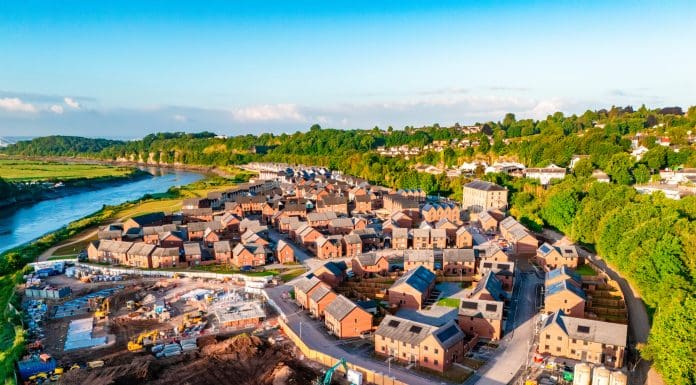
The New Towns Taskforce Report and government response represent welcome progress, but bolder measures will be needed to ensure new towns provide a new model for delivering housing at scale, writes Mark Gauguier, partner at Farrer & Co
Housing delivery in the UK has been unable to keep pace with demand for decades and the need to rapidly scale up the construction of new homes is more urgent than ever. The publication of the New Towns Taskforce Report, alongside the government’s response, is welcome progress towards achieving that aim. New towns present a critical opportunity to reinvent the UK’s model for housing delivery, developing it into one capable of creating new and desirable places to live at scale.
However, in real terms, the material and measurable impact of this announcement feels rather less of a panacea. A commitment by the government to begin work on three of the most promising sites of the 12 identified during this parliamentary term cannot realistically be seen as anything more than a starting point.
The Centre for Cities estimates that there are over four million homes missing from Britain’s housing market, which means the government has much further to go if it is to
redress meaningfully the balance between championing quality and meeting demand for affordable housing
Planning system blockages
With that in mind, the planning system remains an obstacle to delivery across the board. While the selected new towns may be spared some of the planning headaches, other schemes will not have such luck. Admittedly, it is encouraging to see potential change on the way with the Planning & Infrastructure Bill making its way through Parliament, showing the government is continuing to identify and work to overcome the issues preventing housing delivery.
However, the government is now also signalling that another planning bill may be forthcoming. Clearly, blockers still remain, and this can only be interpreted as an implicit
admission that the first bill has not solved the critical issues.
It is imperative that these are speedily resolved if the government wishes to spur a meaningful boost to development. The country simply cannot afford to waste any more time or funds on projects locked in stasis.
Cutting the Gordian Knot of planning will be crucial for attracting more private funding to UK developments, giving investors the assurance they need that their capital can work for them instead of sitting idle.
Unlocking more funding
Alongside reforming planning, the government also needs to tackle the major blocker that is the cost and difficulties associated with upfront infrastructure. This is a stage of the process that tends to be less attractive to would-be private funders as the work is difficult, the risks are high and the returns are a long way off.
In doing so, the government would do well to look at how long-term finance has been made available abroad to overcome similar standoffs, including giving serious consideration to the municipal bonds and special purpose taxing districts that have been so successfully used in the USA.
The New Towns announcement gives some hints that the government is grasping the significance of the constraints represented by a lack of funding, but many questions remain. The government notes that the Social & Affordable Housing Programme, the National Housing Delivery Fund and the newly created National Housing Bank will act as
sources of finance, but there is still little detail on how much financial support will be given to each site and how this funding will work.
Positive signs for a placemaking approach
There are other encouraging signs coming from the report, perhaps marking the beginning of a shift towards a rather better “new normal”. In particular, it is reassuring to see that a placemaking approach is recommended for the development of new towns.
Ensuring that each site has a distinct sense of identity, along with the necessary infrastructure and amenities in place, will help provide crucial support in the creation of
long-term thriving communities. This will be key to maximising the potential social benefits and economic rewards that the new towns offer.
The mindset needed for moving forward
The taskforce estimates that the 12 new towns will have the potential to provide 300,000 homes. In reality, though, the UK’s housing backlog stretches into the millions and the
government has only committed to start building three new towns in this Parliament (and even those are unlikely to make a serious dent in any numbers any time soon). So there remains a lot to do, and quickly.
To make things even harder, the government recognises the need to delicately balance the long-term thinking that is essential for delivering properly planned and well executed
placemaking projects (and unlocking the patient capital that will be required to fund them) with the national mood music, which is impatient and hungry for more immediate
results.
The new towns initiative is a good step forward and aligns positively with other measures that the government is trailing. There is plenty more to do, however, in order to tackle the pressing shortfall – and the government will need to continue to listen carefully and learn fast if it is to make any meaningful impression on the current crisis any time soon.
The post New towns need decisive action to scale housing delivery appeared first on Planning, Building & Construction Today.

